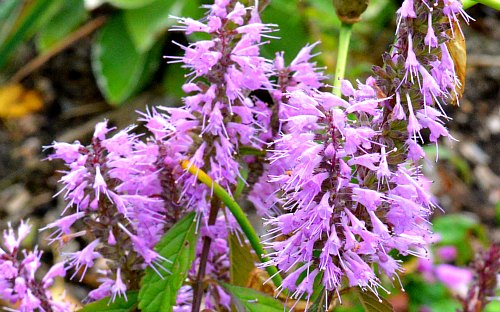Plant of the Month for November, 2015

(el-SHOLT-see-uh stawn-TON-ee-eye)
General Information:
Are you looking for an unusual subshrub for the fall garden? Elsholtzia stauntonii is a good choice. The Chinese mint shrub is rare in northern gardens, where its late flowering is very much appreciated.

Elsholtzia stauntonii; photo by Robert Pavlis
It is hardy down to zone 4, but in that zone you might never see it flower. Even in zone 5, an early frost will result in poor flowering or even no flowers at all. But it is worth taking a chance since so few other shrubs flower so late in the season.

Elsholtzia stauntonii; photo by Robert Pavlis
Many people call it a shrub. Is it a shrub or subshrub? Botanically there is no difference between the two terms. The term subshrub is used more frequently for small shrubs, or bushes. In zone 5, Elsholtzia stauntonii dies to the ground most winters and therefore only reaches a height of about 75 cm (2.5 ft); a subshrub. In warmer climates it can reach 180 cm (6 ft) – more shrub-like.
Elsholtzia stauntoniiis is also known by other common names including mint shrub, peppermint tree, and the Chinese spicebush, each referencing its very strongly scented leaves. A white flowering variety is also available.
The plant shown in these pictures was easily grown from seed.

Elsholtzia stauntonii; photo by Robert Pavlis
Life Cycle: subshrub or shrub
Height: 75 - 180 (2.5 – 6ft), depending on zone
Bloom Time: early fall
Natural Range: China
Habitat: valley streamsides, rocky mountains, dry hillsides, 700-1600m
Synonyms: Aphanochilus stauntonii
Cultivation:
Light: full sun
Soil: well drained, not too rich
Water: regular moisture, but drought tolerant
USDA Hardiness Zone: 4–8
Propagation: seed, cuttings (softwood or semi-hardwood)
Seedex availability (ORG&HPS annual Seed Exchange): occasionally
